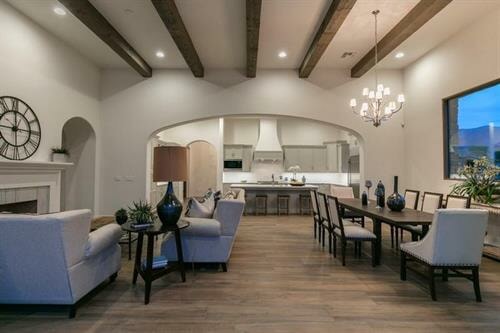10-Step Guide to Buying a New Home

1. Check your Credit and Set your Budget
First and foremost, you want to ensure your finances are stable and in good standing. This goes a long way with lenders and will help determine how much house you can comfortably afford. Experts suggest beginning with three to four times your annual income as a starting point, although prior debt, or lack thereof, will allow for fluctuations in your budget.

2. Get a Realtor
Although this isn’t mandatory, utilizing a Realtor can save you large amounts of time and stress. Paid by the seller, Realtors are there to help YOU find your next home. Finding an agent with whom you’re comfortable working with and understands your needs is important. If you’re interested in moving to one of the best gated golf courses in Arizona, we highly recommend working with Ian Smith, local res
ident, golf member and top-notch licensed Realtor for Superstition Golf and Country Club.
3. Receive Pre-Approval from Lender
When starting the process of obtaining a mortgage, your lender will provide you with a loan pre-qualification or pre-approval letter. This document will further shape the amount of home available to purchase. It takes the applicant’s finances, debts and more into consideration. Sharing the amount of your loan qualification with your agent will allow them to have a better idea of what price range of homes to show you.
4. View Potential Homes
This is arguably one of the most fun steps on the path to home ownership. Take your time and remember to not become discouraged if you do not find your next home sweet home in the first, second or third time viewing homes. To help streamline the process, make a list of “must-have features” for your future home. If a house does not have a particular feature, you can quickly move onto the next one or only view homes that have the amenities you desire.

5. Select a Home and Make an Offer
Many say you know when you have walked into “the one.” Congratulations, you have found your next home! Now it’s time to work with your Realtor to make the initial offer on the house. Your Realtor will be able to find out how much comparable homes in the area have sold for and will advise you on a reasonable offer. It’s important to note that the initial offer is not set in stone.
6. Enter Contract
Once under contract, the seller may not interact with another home buyer. Your agent will be the main liaison for all your communications with the seller and commonly works alongside your lender for all paperwork.

7. Purchase Home Insurance
As the buyer, it is your responsibility to purchase homeowner’s insurance for the property. This will help protect your new investment in the event of fire, theft or other potential liabilities. Commonly, discounts are available if you insure your home with your current automotive insurance provider.
8. Inspections
Arrange for a home inspector to visit the property for sale. The inspector will review and examine structural soundness of the property and ensure vital systems of the home are functional. Any problems or repairs needed will be noted. The home inspector will also check the insulation as well for signs of mold, asbestos and pests.
9. Close the Deal
Review your contract with both your lender and Realtor. Do not hesitate to ask any questions about the process or specific line items. Then, when you’re ready, find a time that is convenient for both parties and sign the documents for your property.

10. Move in!
Congratulations, you did it! All that is left now is to hire a moving company or wrangle friends and family and move into your new home.
Looking for more tips on buying a seasonal home? Check out these helpful blogs: Best places to purchase a second home or 5 Tips to Consider When Buying a Second Home or Vacation Home


